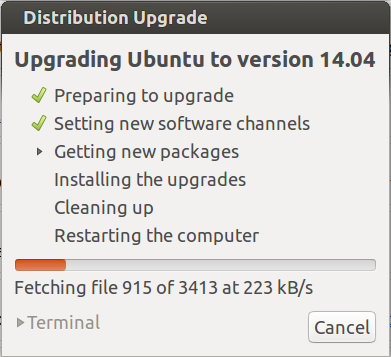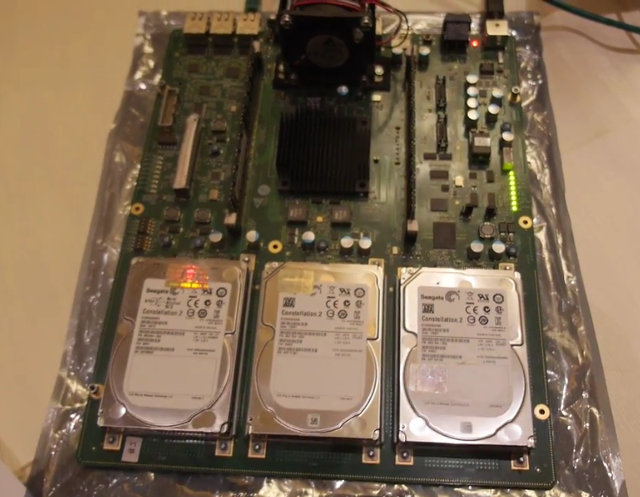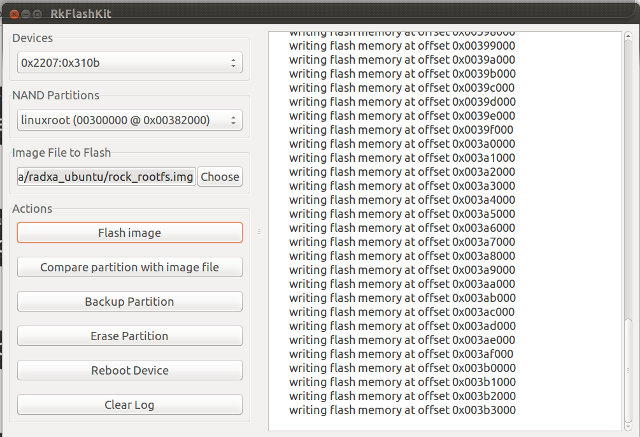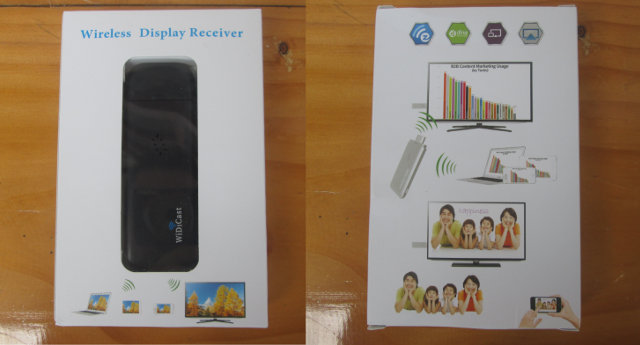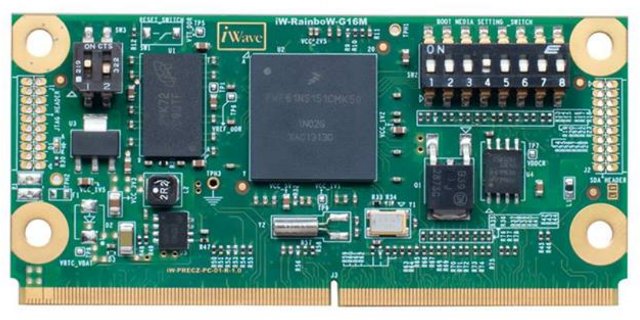Every two years, Canonical releases Long Term Support (LTS) version of Ubuntu Linux based operating systems. The previous version was Ubuntu 12.04 LTS “Precise Pangolin”, and the latest Ubuntu 14.04 LTS “Trusty Tahr” has just been released with a 5 year support commitment for bug fixes and security patches. The company also releases other version every 6 months without long term support. There has not been major changes to this version, at least compared to Ubuntu 13.10, with the development team focusing on performance and stability improvements. For the first time, this LTS release also includes Kubuntu, Edubuntu, Xubuntu, Lubuntu, Ubuntu GNOME, Ubuntu Kylin, and Ubuntu Studio. It is also the first long-term support release to support “arm64” architecture for 64-bit ARM systems. Some notable others changes for Ubuntu Desktop include: Support for High-DPI screens and desktop scaling New screen saver and lock screen New window decorations, with improved appearance […]
Huawei D01 Server Board Features 16 ARM Cortex A15 Cores with up to 64 GB RAM, 3 SATA, 2 GbE Ports
During Linaro 14.02 release, I noticed a Huawei D01 board with 16 ARM Cortex A15 core, but details were lacking. Charbax was a Linaro Connect Asia earlier this month, and he could film the board in action, and interview the development team about this server board, and software development. Huawei D01 specifications: Processor HiSilicon SoC with16 x ARM Cortex-A15 CPU Core @ max. 1.5GHz (up to 84000 DMIPS) Support for CPU configuration as AMP/SMP Configurable Big or Little endian. Default: Little endian System Memory – 2x 64bit DDR3 DRAM Dual Inline Memory up to 1600 MHz, Module(DIMM) sockets:(2)&(3) . Default capacity: 8GB, upgradeable to 64GB Storage – 2x 1Gb NOR Flash, 2x 512MB NAND Flash, 3x SATA III for 2.5″ hard drives or SSD, 1x SD card Connectivity – 2x 10/100/1000Mbit/s Gigabit Ethernet ports, 1x 10/100Mbit/s FE port Other Peripheral Interfaces 2x USB 2.0 Host ports 2x UART, 4x I2C, […]
Getting Started with Raxda Rock – How to Generate and Flash Ubuntu Saucy Server and Desktop Images
I’ve already written a guide showing how to build and install Android in Radxa Rock. Today I’m going to build the Linux kernel, generate a Ubuntu server images based latest Ubuntu Linaro server release, flash the image to the NAND flash, and show how to install LXDE or XFCE desktop environment. If you are just interested in installing one of the latest supported images, you can download Android, dual boot (Android/Ubuntu), Ubuntu ALIP, and Router images for Radxa Rock @ http://dl.radxa.com/rock/images/, and skip “build” and “generate” instructions, and just follow the flashing instructions below. All steps in this tutorial will be done in Ubuntu 13.10, and lots of the instructions below follow hwswbits blog and Ubuntu Radxa Wiki. Build the Linux kernel Let’s start by building the Linux kernel. I’m assuming you’ve already install development tools in Ubuntu (e.g. apt-get install build-essentials). You can refer to the list at the beginning […]
Linux Kernel 3.13 Release
Linus Torvalds announced the release of Linux Kernel 3.13 yesterday: The release got delayed by a week due to travels, but I suspect that’s just as well. We had a few fixes come in, and while it wasn’t a lot, I think we’re better off for it. At least I hope so – I’ll be very disappointed if any of them cause more problems than they fix.. Anyway, the patch from rc8 is fairly small, with mainly some small arch updates (arm, mips, powerpc, s390, sparc, x86 all had some minor changes, some of them due to a networking fix for the bpf jit). And drivers (mainly gpu and networking). And some generic networking fixes. The appended shortlog gives more details. Anyway, with this, the merge window for 3.14 is obviously open. Kernel 3.12 brought new features to BTRFS and XFS file systems, PC’s GPU drivers improvements, better memory handling, […]
WiDicast EC-E2 Wi-Fi Display (EZCast / Miracast / DLNA) HDMI Dongle Review
After my review of Tronmart T1000, an EZCast / Miracast / DLNA HDMI adapter, I’ve received another EZCast dongle with the same features called WiDiCast EC-E2 sent to me by Shenzhen EC Technology, the manufacturer of the device. In case you are not familiar with this type of device, they allow you mirror and control your smartphone / tablet (Android, iPhone, iPad) or computer (Windows, Mac OS X) display on an HDMI TV. Today, I’ll go through the specifications, show some pictures including a comparison with T1000, and try it with an Android smartphone. WiDicast EC-E2 Specifications Like all other EZCast adapters,WiDicast is based on Actions Semi SoC: SoC- Action Semi AM8251 @ 600MHz (MIPS) System memory – 128 MB DDR3 RAM Storage – 128 MB NAND Flash Video output – HDMI Wi-Fi – 802.11 b/g/n Wi-Fi Standards – Miracast, Airplay, DLNA, and EZCast Video container formats – avi, .divx, […]
Linaro 13.11 Release with Linux Kernel 3.12 and Android 4.4
This release includes Linux Kernel 3.12 (baseline), Linux Kernel 3.10.20 (LSK), Android 4.4 for the first time, and Ubuntu Linaro 13.11 (still based on Raring). Beside Android Kit Kat support, other noticeable updates include initial documentation for LAVA, and further work on ARMv8 support. Here are the highlights of this release: Android Engineering Android 64-/32-bit updated to 4.4 KitKat Fastboot/UEFI – Created Fastboot app design Builds and Baselines Linaro Stable Kernel 3.10.20-2013.11 released – Includes an updated big.LITTLE MP patchset Linux Linaro 3.12-2013.11 released: gator version 5.16 (same version as in 13.10 release) updated big-LITTLE-pmu, iks, iks-cpufreq, and interactive-gov-updates topics from ARM LT updated basic Capri board support from Broadcom LT (generic phy support for USB, watchdog, updated bcm_defconfig) updated big endian topic updated topic to support K3V2 board from Hisilicon LT updated Versatile Express patches from ARM LT vexpress64 support (updated FVP Base model files, added support for FVP […]
Linux Kernel 3.12 Released
Linus Torvalds has announced the release of Linux Kernel 3.12: I was vacillating whether to do an rc8 or just cut the final 3.12, but since the biggest reason to *not* do a final release was not so much the state of the code, as simply the fact that I’ll be traveling with very bad internet connection next week, I didn’t really want to delay the release. Sure, we had a number of driver reverts, and there was an annoying auto-NUMA memory corruption fix series, but none of it was really worth delaying 3.12 for. But the fact that I’m going to be (effectively) off-line next week means that I’m *not* opening the merge window for 3.13 yet – since I won’t have the bandwidth to really do merges anyway. That doesn’t mean that you can’t send me pull request for the merge window early, of course – maintainers can […]
iWave Systems Introduces RainboW-G16M µMXM SoM Powered by Freescale Vybrid ARM Cortex A5 / M4 SoC
iWave Systems has unveiled new microMXM system-on-modules powered by Freescale Vybrid dual core ARM Cortex-A5 @ 500Mhz and Cortex-M4 @ 167 Mhz SoC. Rainbow-G16M modules target applications that can leverage the Cortex M4 MCU for real-time tasks, and the Cortex A5 core for application processing such as industrial process control & kiosks , smart grid, medical / healthcare devices, smart connected devices, and battery operated handheld devices. Here are the module specifications: SoC – Vybrid VF6x Series Controller with ARM Cortex A5 core @ 500Mhz, and Cortex M4 core @ 167 MHz System Memory – 256 MB DDR3 (Expandable upto 1GB) Storage 256MB NAND Flash (Expandable up to 2GB) QSPI Flash (Optional) EEPROM (Optional) On Board peripherals support: On module 10/100 Ethernet PHY JTAG Header for processor (Optional) Open SDA Header (Optional) DIP Switch for boot settings (Optional) 314-pin MXM PCB Edge Connector Interfaces: 10/100 Ethernet PHY interface 2nd RMII […]


